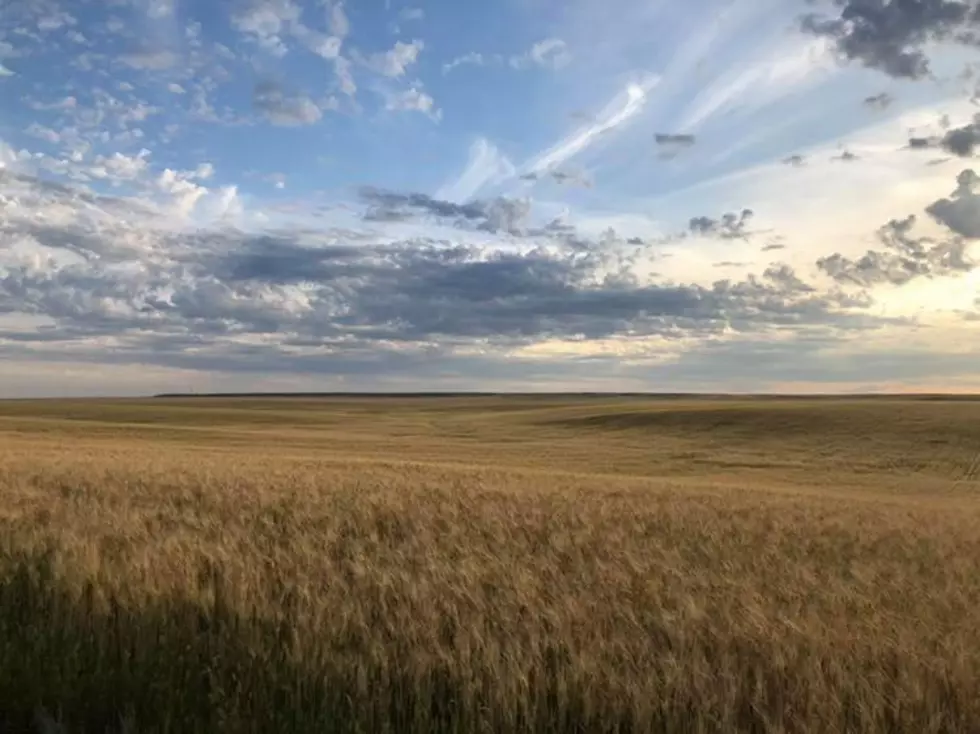
DNRC wants more public input if cloud seeding is approved
If the 2021 Legislature approves, Montana could join a few Western states trying to counteract the effects of climate change with cloud seeding. But the Department of Natural Resources Conservation wants the public to stay involved.
Midway through September, almost three-quarters of Montana is abnormally dry while 15% - mostly in the southwest and southeast - is experiencing moderate drought, according to the National Drought Mitigation Center. The result is that crops yet to be harvested are stressed, and wildfire is still a threat.
Some ranchers want to use a weather tool that might reduce the drought somewhat: cloud seeding. So they took their request to the Montana Legislature.
On Tuesday, the Legislative Water Policy Interim Committee debated whether to sponsor a bill that would make it easier for companies to conduct cloud seeding in Montana. According the North American Weather Modification Council, Montana is one of five Western states that don’t seed clouds. Six other states do, including Idaho and Wyoming.
Over the course of the year, the committee has studied cloud seeding and staff drafted a bill. It went out to public comment, which was supportive.
“The cloud seeding and storing water higher in the mountains is important to (the Association of Gallatin Irrigators),” said AGI spokeswoman Krista Lee Evans.
Cloud seeding is a tool that has limited application and a minimal effect.
During cloud seeding, a plane drops silver iodide for an hour into a strong weather system passing over the mountains. Since the particles can remain airborne for about an hour, about two hours of added precipitation may fall during a long-duration blizzard.
So, applicators must wait for big storm systems carrying a fair amount of moisture. And cloud seeding should really occur only during winter to bolster the snowpack. If summer storms are seeded, any added rain is quickly lost to the ground, so there’s less benefit.
Last fall, Idaho Power scientist Derek Blestrud told the Water Policy committee that he’d estimated cloud seeding added between 5% and 15% more moisture in various Idaho basins.
But it’s difficult to know whether cloud seeding produced more moisture during any particular storm or how much, University of Colorado atmospheric scientist Katja Friedrich told the Missoula Current.
“Quantifying is the big question,” Friedrich said. “In the literature, you see numbers from 0% to 50%. I always say you can pick a number because we don’t know.”
But that doesn’t stop farmers and ranchers from wanting to try.
“You can call it ‘climate change,’ you can call it ‘weather,’” said Sen. Bradley Hamlett, D-Cascade. “But the other ‘whether’ is whether or not you want to have sufficient irrigation water and streamflow, and I think the answer is yes.”
An earlier draft of the bill would have limited the DNRC to conducting only an environmental assessment of any cloud-seeding project and license. But DNRC staff asked the committee to change that to allow the full public process outlined in the Montana Environmental Policy Act.
Paul Azevedo, DNRC Water Management Bureau chief, said the current method of cloud seeding probably wouldn’t require more than a basic environmental assessment. But new technology might develop that could raise concerns and require a more rigorous environmental impact study.
DNRC director John Tubbs said a high level of public interest could also ramp a project up from a environmental assessment to an impact study.
“Often when an EIS is required, it is the result of substantial and considerable public comment,” Tubbs said. “We’ve had many of what we thought were benign issues. But when we rolled it out to the public, the public didn’t think they were so benign.”
Azevedo couldn’t say whether the MEPA process would require more time than just an environmental assessment. Data from other states are already available, and the process could become routine after the first application went through. But Hamlett said the timeline for applying might need to be lengthened.
Rep. Walt Sales, R-Manhattan, asked if the DNRC would oppose the bill if the committee didn’t approve the change. Tubbs said he couldn’t predict what would happen after the Nov. 3 election.
“That’s got a new administration’s tag on it,” Tubbs said. “We will suggest (that) you are attracting possible opposition to the bill if you limit MEPA in this code. Because there are defenders of MEPA out there.”
The Water Policy committee has one more meeting in October before the interim session ends. So, Sales suggested that the committee members wait until October so they can collect more information before voting on the DNRC’s requested change.
Sen. Jill Cohenour, D-East Helena, agreed to allow the committee more time, even though she made the motion to consider the change.
“I think the MEPA is necessary so you get that public voice,” Cohenour said. “If it’s really loud and really a problem and we need more information to process a permit, then I think that’s where the public voice needs to be maintained.”
The committee is also considering increasing a cloud-seeding company’s insurance liability to $1 million from $100,000. Azevedo said $100,000 wouldn’t cover much in the case of an accidental flood or other unforeseen hazard caused by cloud seeding.
The committee is requesting input on this and other bills and studies they’ve produced during the interim before their October meeting, which has yet to be scheduled.
Contact reporter Laura Lundquist at lundquist@missoulacurrent.com.
